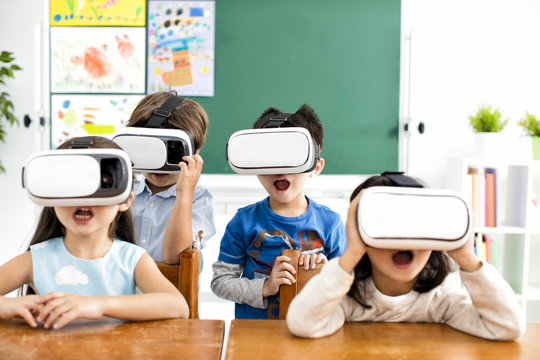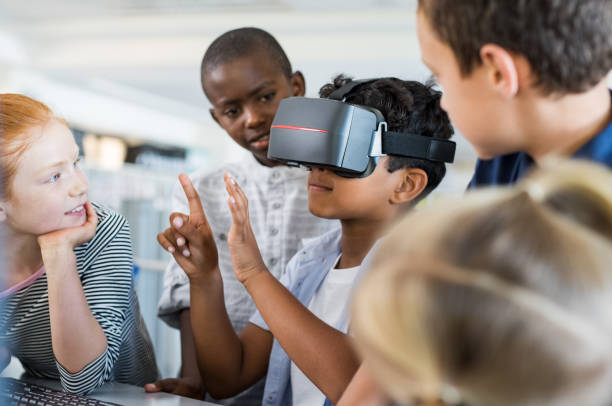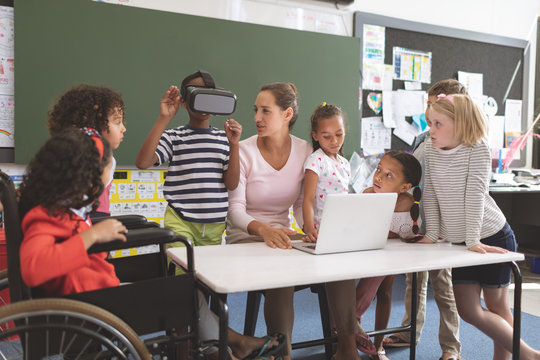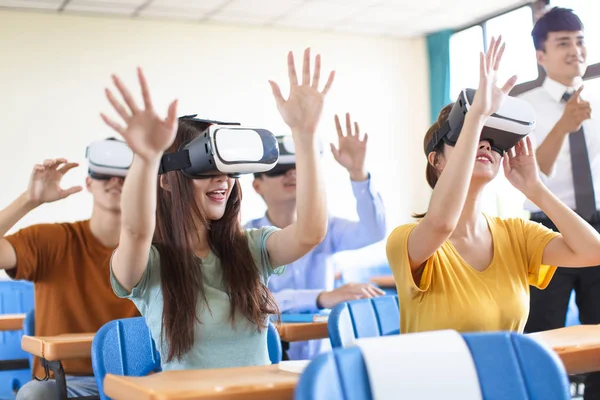Young Interpreters Project
I came across this mission while scrolling Twitter for a post on collaboration in education. Collaboration in education happens every day in every school, but there aren’t always articles about it, which was the challenge. When I read about this project, I thought it was admirable.
There have been waves of migration in Europe, causing students to be in schools where their native language isn’t taught. This project would aim to train students to become “Young Interpreters” to the new students. The students must undergo official training to ensure they are well equipped to serve the incoming students. This project would have six partners from five countries participating, all of whom had faced this education challenge.

The incoming students will feel more comfortable entering a new school with an unfamiliar language if they know a peer will translate for them. This also allows for peer-to-peer learning, which is crucial in this type of environment. The new student will be able to develop new skills with less pressure and still learn new information being set up for success.
The idea behind this project is to recruit 120 student interpreters in five countries and up to ten languages which can reach so many students!
If you click the impact report, you can see they’ve surpassed their goal. They’ve supported almost 400 new students in 19 different languages. They even included a few case studies to show growth which was really neat.
UnidosUS’ Padres Comprometidos Program Helps Latino Parents Improve Digital Literacy Skills
The Office of Ed Tech Twitter account posted this article, detailing UnidosUs’ new program, Padres Comprometidos. UnidosUS is the largest nonprofit Latino civil rights advocacy organization in the U.S. The goal of this program is to help narrow the digital divide that is often an obstacle blocking Latino parents’ ability to advocate for their childrens’ education.

Many parents in hispanic communities lack the necessary technology to communicate with the school system and stay engaged, or otherwise, do not understand how they can take advantage of the technology they have access to. The Padres Comprometidos Ed Tech Program offers resources to parents and guardians to teach them how to use common digital platforms and learning management systems used by schools. The program works with schools, districts, and PTAs to empower parents with digital skills so that they can build strong a strong relationship with the school and be fully invested in their children’s educational success.
With the increased use of digital tools in education, it is imperative that parents are equipped with the skills and knowledge to best support their children’s learning. Underserved communities with large Latino populations may suffer as schools integrate technology further. Programs such as these help to alleviate that issue and make a positive impact on the educational outcomes of children who grow up in these underserved communities.
A.I. Intergration
In an article I found about Artificial Intelligence, there is a discussion about how A.I. can be used to help the students and make the learning environment of all schools more accessible. Making it easier to communicate with students that are multilingual learners or students with disabilities. A.I. can be used to help students learn at different rates instead of going at a rate comfortable to the majority, with might be to fast or to slow for some learners. A.I. also has the ability to adapt to a student’s answers, instead of marking an answer to a question incorrect of correct, A.I. is able to adapt to a student’s learning process, these adaptations may allow the student to become stronger in the classroom by working with their strengths and finding ways to overcome weaknesses. To go along with not just marking a question right or wrong, A.I. can give feedback frequently in order to improve the teaching and learning experience.
The article also goes over the fact that teachers are not being replaced. It reminds us that we teachers are the ones applying A.I. to lessons and that when applied A.I. is going to be based on established, modern learning principles, use the wisdom of educators, and should use the expertise of educational assessment to improve fairness and detect bias.
I think the article points to two major problems that need to be overcome. The A.I. system producing inappropriate or wrong ideas that could amplify unwanted biases; and, strengthening the trust that educators have in A.I. and its ability to be used as a teaching tool. These two problems can be solved with time (teachers using A.I. and seeing how its functions can be applied and research and development of A.I. from the manufacture) and specific guideline set into place, dictating how A.I. can be used safely and appropriately in the classroom.

Virtual Reality in Classrooms, What Fun!
As we may know, there is a significant rise in technology. Nowadays, technology can either be seen right in our own homes, right outside our windows, or in our own hands. With the rise of technology comes the inspiration for new ideas. We all love our phones. We all love playing games on our phones, reading, writing, and even watching movies on our phones. And now, thanks to new technology, there is a way to bring all that to us in a new fun experience.
Virtual Reality, better known as VR, is precisely how it sounds. A reality that is not real but is made to be with the hard work of professionals. With these new experiences, millions of people have begun to submerge themselves in the newfound experience. Being able to go for a run right in the comfort of your own home doesn’t sound too bad. But, with more work, there is a way now that not only adults but children are able to experience and learn new things, even in a classroom. VR is the future of our classrooms.

With the rise of Virtual Reality in classrooms, there are bound to be people who would prefer to avoid the idea of technology running the classroom. They may be scared that their children will become addicted to technology. Or they are afraid that technology does not teach as well as actual humans do. While these are valid concerns, VR can bring many offers to students.
The article states,
“Students expressed enthusiasm for learning with VR, with 87 percent of all responses indicating that the VR lesson was useful, enjoyable, and something students would like to learn with in the future “
Flynn, Catt, and Peter Frost. “Making VR a Reality in the Classroom.” EDUCAUSE Review, 16 Apr. 2021, er.educause.edu/articles/2021/4/making-vr-a-reality-in-the-classroom.
So, with that enthusiasm comes the progress.
The benefits that VR in classrooms may bring to the table may include the following:
Enhanced Participation: Students are captivated by virtual reality and encouraged to learn actively. Understudies can investigate and connect with subjects like history, science, and topography, making picking up drawing in and intelligent.

Experiential Learning: Virtual reality (VR) enables students to participate in experiential learning by simulating actual events. Students in engineering and medicine can practice procedures and designs, gaining confidence and practical knowledge.

Access to Unreachable Locations: VR transports understudies to distant areas and periods. They can travel, learn about ancient civilizations, observe historical events, and cultivate cultural empathy.

Individualized Instruction: VR permits fitted growth opportunities to address individual issues. Platforms can be adapted to the abilities of students, providing individualized instruction, revisiting concepts, and immediate feedback.

Social Learning and Collaboration: Students can collaborate, communicate, and solve problems in VR-facilitated collaborative learning experiences. They can interact with peers and experts from all over the world, fostering collaboration and cultural exchange.

Better retention and motivation: VR further develops understudy inspiration and maintenance. Students are captivated by its immersive nature, which results in memorable experiences and increased engagement and knowledge retention.

Virtual reality can possibly upset instruction by giving a vivid and intelligent growth opportunity. Using virtual reality in the classroom has numerous advantages. As this tech becomes more accessible, teachers should embrace its capability to establish a dynamic and viable learning climate that prepares understudies for future difficulties. Students can gain the knowledge and skills they need to succeed in the digital age by incorporating virtual reality into their classrooms.
I look forward to seeing the future with Virtual Reality in classrooms. We have the technology; we might as well use it.
Thank you!
The Importance of Universal Design for Learning(UDL)
Universal Design for Learning (UDL) are the main practices that teachers and instructors can implement to create a thriving learning environment. The four “gears” to UDL are mindset, skill, practice, and the UDL guidelines. To go into more depth about these “gears”, an instructor needs to have a certain mindset and set of skills to create a proper learning environment. The practices used by the teaching instructor and how they go about using the UDL guidelines also affect how well the students learn. The guidelines are put into place as recommendations so students can participate in learning with meaning and purpose.

The UDL guidelines show recommendations for engagement, representation, and, action and expression. The strategies proposed provide ways to access interest, perception, and action, to then build on persistence, language, and communication, to lastly internalize the information with self-regulation, comprehension, and functions.
To create a successful learning environment all of these “gears” must be put into play. For example, if an instructor has the right mindset but the skills and practices needed are not there, then the students’ learning comprehension will not be the best it can be. Although the UDL guidelines are just suggestions, they are important for teachers and/or future instructors to review in hopes to achieve the best education environment for all students.